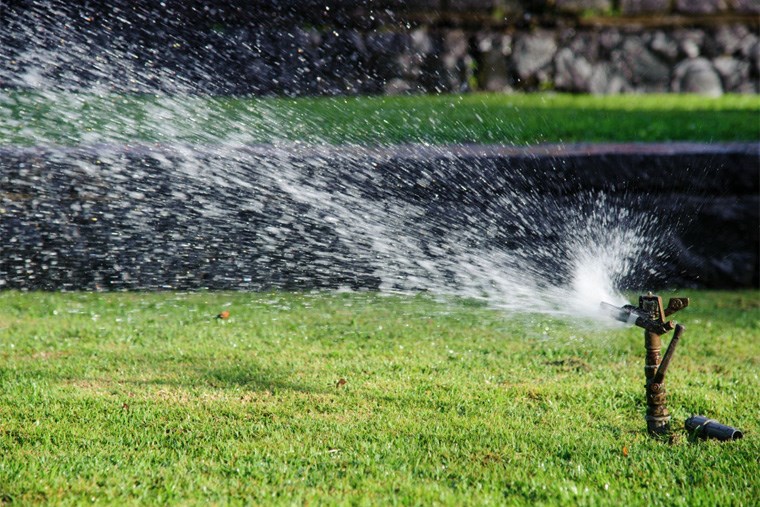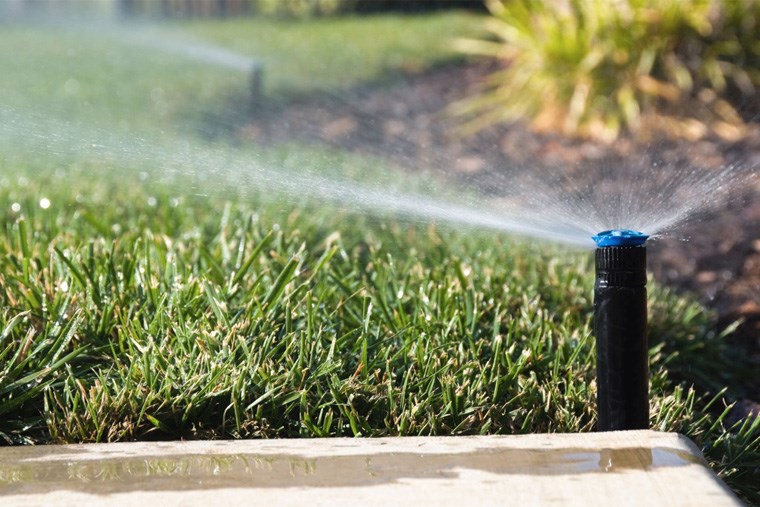An efficient irrigation system is essential to properly maintain your lawn and landscaping. Installing a system of your own can be challenging, but with some research and maybe some expert help, you can create the right system for your needs.
From design tips to important considerations, you’ll be able to confidently tackle installing an irrigation system yourself with this get-started guide.
Proper Design Is Critical
Ensuring your plants are getting the right amount of water will make or break your design. Make sure turf has adequate coverage without any glaring gaps or overlapping irrigation heads. To determine if this is a project you can take on, familiarize yourself with the installation process first, then use it to help plan out your sprinkler system design.
Landscape plants like shrubs or flowers will come with distinct water requirements, and you shouldn’t rely on your turf heads to provide irrigation to these areas. Try installing drip irrigation or misters to water your landscape plants.
Understand Water Sources
After you’re finished planning and designing, you’ll need to select a source for your water. If you’re looking for an easy install that isn’t labour-intensive, you can choose to connect to a spigot already located on the outside of your home. More complicated installs involve tapping into your main water line.
Tap installation is complicated and involves a detailed understanding of what’s happening below ground. Never attempt to add an irrigation tap without coordinating with your water provider. Visit Alberta One Call and book a service to have your utility lines marked before you start digging to avoid costly line breaks.
 Mac99 via gettyimages.com
Mac99 via gettyimages.comTime to Dig
Once you have established your water source, you can begin trenching lines for your pipes. Many newer valves and controllers are wireless, but if you’re using a wired system, you’ll be able to run them in the same trench as your pipe. Be sure to place wires under the pipe to avoid damage from future maintenance.
While trenching lines for your pipe, you’ll also want to dig out an area for installing valves and a valve box to protect them. When designing and constructing your valve manifold, be sure to leave yourself plenty of room to work, and consider placing landscaping fabric under the valves to keep your box cleaner. Using a forward-thinking approach during the design phase can save you unnecessary work for future repairs.
Once trenches are cut, you’re ready to lay pipe and install heads and valves. Ensure your pipe is at a proper depth to avoid breaks due to cold weather and damage during cultural practices like aerification. Spend extra time ensuring heads are level and straight to guarantee good coverage.
Choose the Right Controller
The right irrigation controller for you is entirely a personal preference. Some models are nuanced and enable users’ full customization of watering schedules. Others offer simple controls and an intuitive design. Many newer controllers use smartphone apps and wireless technology to allow users to program their systems from anywhere. This can be invaluable if you’re a frequent traveler and need to adjust your watering schedule on the go.
No matter how you design your system or what controller you choose, know your climate and your landscape’s water requirements.
Shutting down your system during rainy stretches can help eliminate overwatering and lower the risk of turf disease. And if you have a pipe break or are curious about trenchless replacement, consider calling a local expert for advice or assistance.

This story was made possible by our Community Partners Program. Thank you NWR Painting Inc. for helping to expand local news coverage in the Bow Valley. Learn more.




